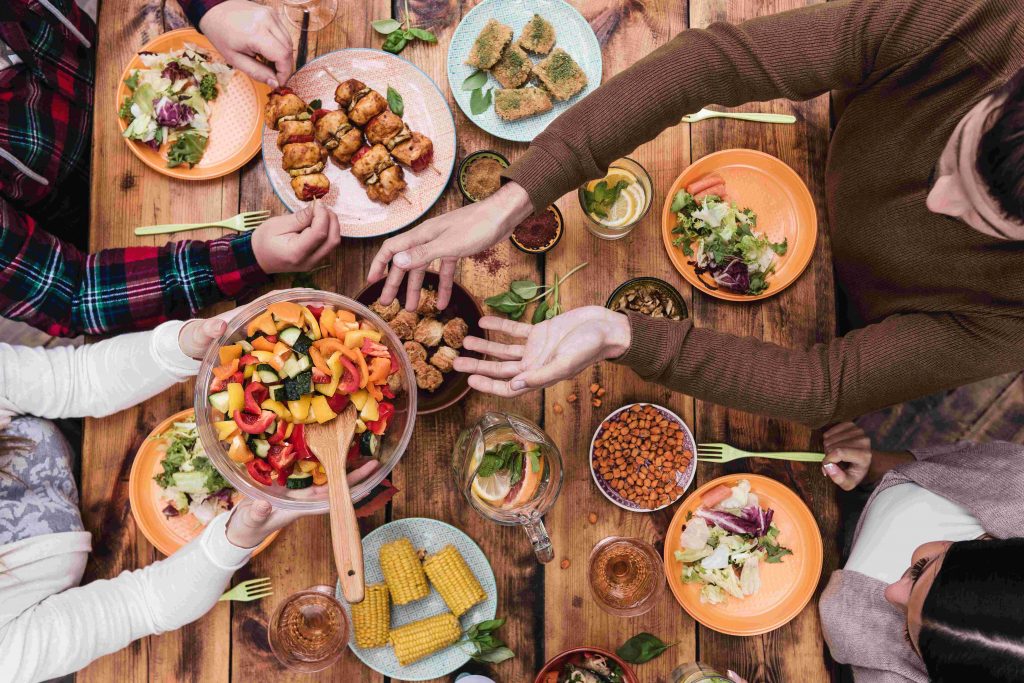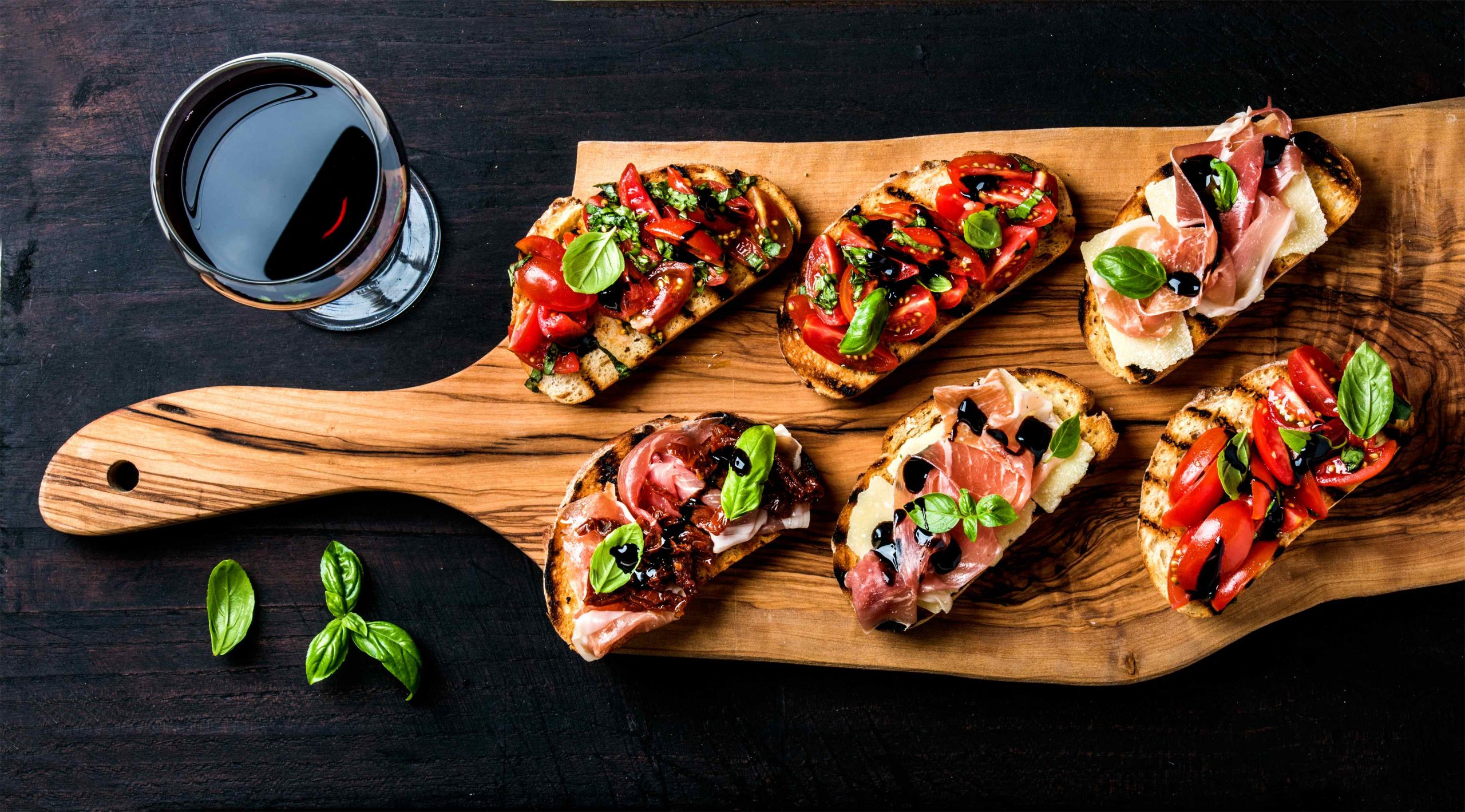Looking to split entrees or stick with starters to save on your next dinner out? Restaurants are on to you.
After years of pushing small, shareable plates, and rising prices that have prompted some customers to split dishes to save money, restaurants want you to order more. So they’re introducing hard-to-share menu items and asking servers to nudge diners to load up on extra small plates. It’s an attempt to keep customers happy—and checks high.
In 2023, 49% of restaurants reported lower check averages and 53% reported lower profits compared with the year before, according to the James Beard Foundation, a restaurant-focused nonprofit. At the same time, dining out has grown more expensive: The latest consumer-price index showed the cost of food away from home climbed 5.3% over the 12 months ended in November.
Restaurants don’t want to forbid splitting, says Abraham Merchant, chief executive of a New York-based management company with 17 affiliated restaurants. Instead, his restaurants are trying subtle strategies like creating single-bite items, like a duck confit spring roll meant for one, without getting rid of splittable options, like roasted carrot hummus.
“It’s a struggle,” he says. “We discourage as gently as we can.”
When diners share fewer dishes, linger too long or don’t run up bills with alcohol, it can be tough to offset expenses like higher labor costs, says Anne McBride, vice president of programs at the James Beard Foundation.
In 2022, 21% of diners said they split an entree to lower the cost of a meal within the previous six months, and 58% said they would keep doing so, according to market research from Datassential.
Happy with apps
Kylie Monagan, a partner at Civetta Hospitality, made a discovery after digging into eight months of ordering trends for one of her company’s restaurants. Larger party sizes—those with six or seven people—often had the lowest per-person check averages when sharing dishes at Calissa, a Greek restaurant in Water Mill, N.Y. Often those groups would come in to drink and socialize without ordering individual entrees.
“People sharing plates was not great for us,” she says.
To target the snacks and drinks Hamptons crowd, Monagan updated sections of the menu last summer. She added pricier items, including a section of small plates like thinly sliced raw yellowtail ($24) and fluke ($18), that aren’t meant for sharing.

Those who prefer to split can order a crudo sampler of all the fish for $85. A larger portion of lobster pasta that used to cost $60 now costs $130 and is also meant for sharing. Adjusting the portion sizes and prices allows diners to share while keeping per-person checks high, she says.
“We needed to position the menu in a way that made sense for us financially while understanding that people come here to share with their friends,” she says.
Matilda Parente, 70 years old, says she prefers smaller, adventurous bites over classic entrees when dining out.
“Appetizers are more budget-friendly and more appealing, quite honestly,” the San Diego-based physician says. She tends to give in if the server insists that the entree “isn’t an upsell,” including a recent beef heart main dish from a South American restaurant.
More strategy
Tracy Borkum, founder of Urban Kitchen Group in San Diego, reworked the menu at her four Cucina restaurants this year to offer smaller and cheaper plates to encourage splitting. With many people already sharing entree-size portions at the Italian restaurants, she hoped diners would order and share more small plates to keep check averages steady.
In two locations, diners complained about the smaller portions without noticing the lower prices, she says. One large meatball that cost $15 was now three smaller ones and cost $12.50.
“That was earth-shattering to people,” Borkum says.
Erik Niel recently introduced stand-alone proteins in a Big Meats section at his Chattanooga, Tenn., restaurant Easy Bistro and Bar. The French eatery now offers items that are more filling and easier to split, including a whole chicken, he says.
The catch: Sides come separately instead of with the entree, so when diners split a main course, they are encouraged to order more.
As a last resort, servers are trained to warn diners if the food they are splitting isn’t filling enough for a complete meal.
In the kitchen, Niel also hesitates to make it easy for guests looking to split smaller plates into separately plated appetizers. The kitchen won’t add more sauce or food to a split plate. And he says he asks some cooks to create “one salad in one bowl and move to two bowls” to train them not to pile on extra food in each.
“I don’t want it to be something where guests can game the system,” Niel says.
Erika Chávez enjoys the communal aspect of sharing dishes, but worries that piling on small plates can strain some budgets.
On a recent night out, each friend at the table placed an order through the restaurant’s QR code rather than with the server. The table still shared their dishes, but it also made her friends more conscious of how much they spent per meal because they could see their own total.
The result was a way to share without the stress of “Who is going to pay for what?” the 43-year-old Chicago-based marketing director says.
Nori De Vega says she has tried several strategies to save on dining out after being laid off from her tech marketing job in early 2023. The 34-year-old from Portland, Ore., has become more cautious when out with friends because it was tough to control what others would order, including $25 cocktails.
Rather than split plates with a larger group, De Vega, who recently started a new marketing job, now tells close friends that she’ll keep her check separate. She orders a drink and a small bite.
“Sometimes you get a spoonful and pass it around,” she says.



